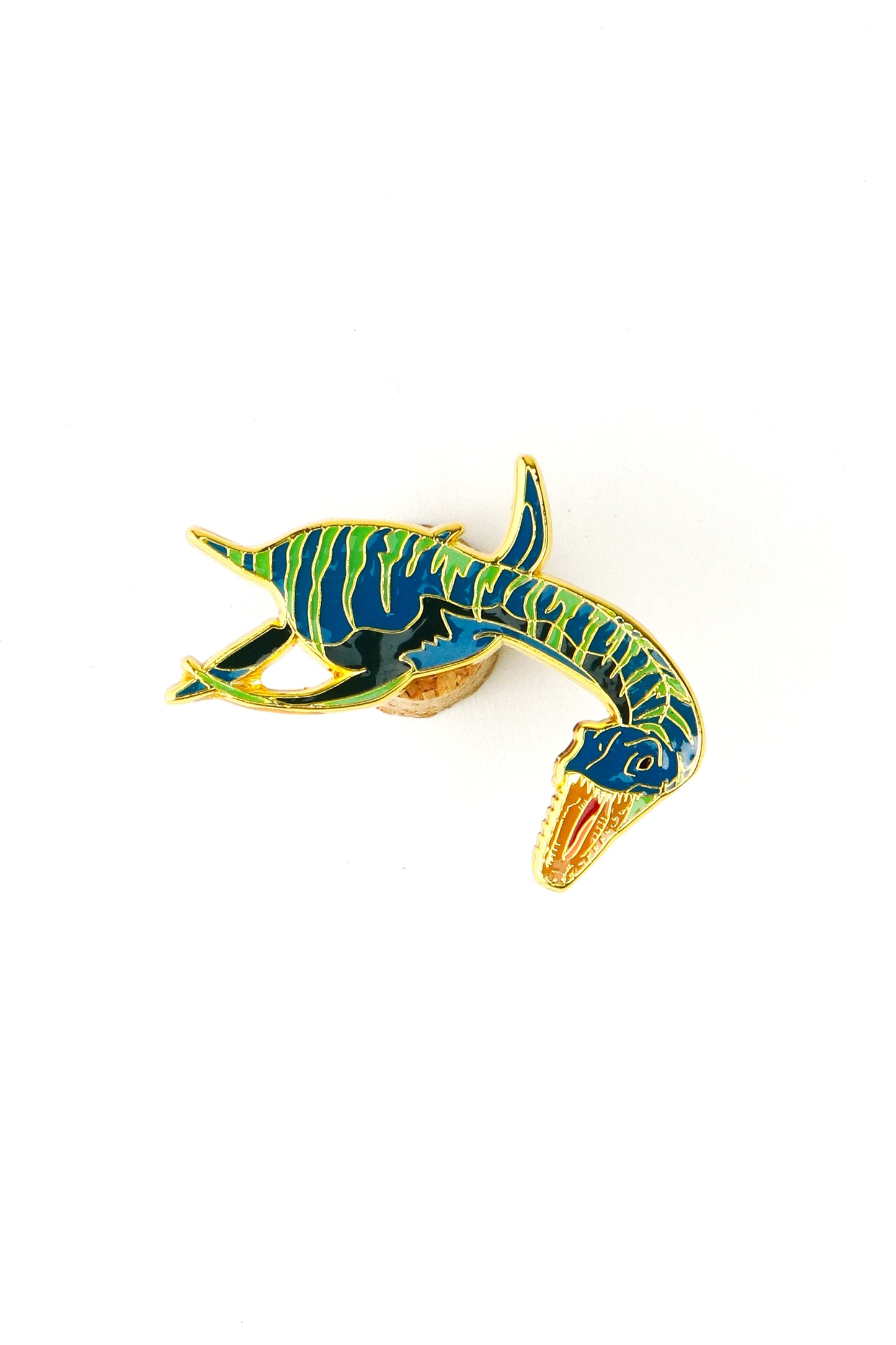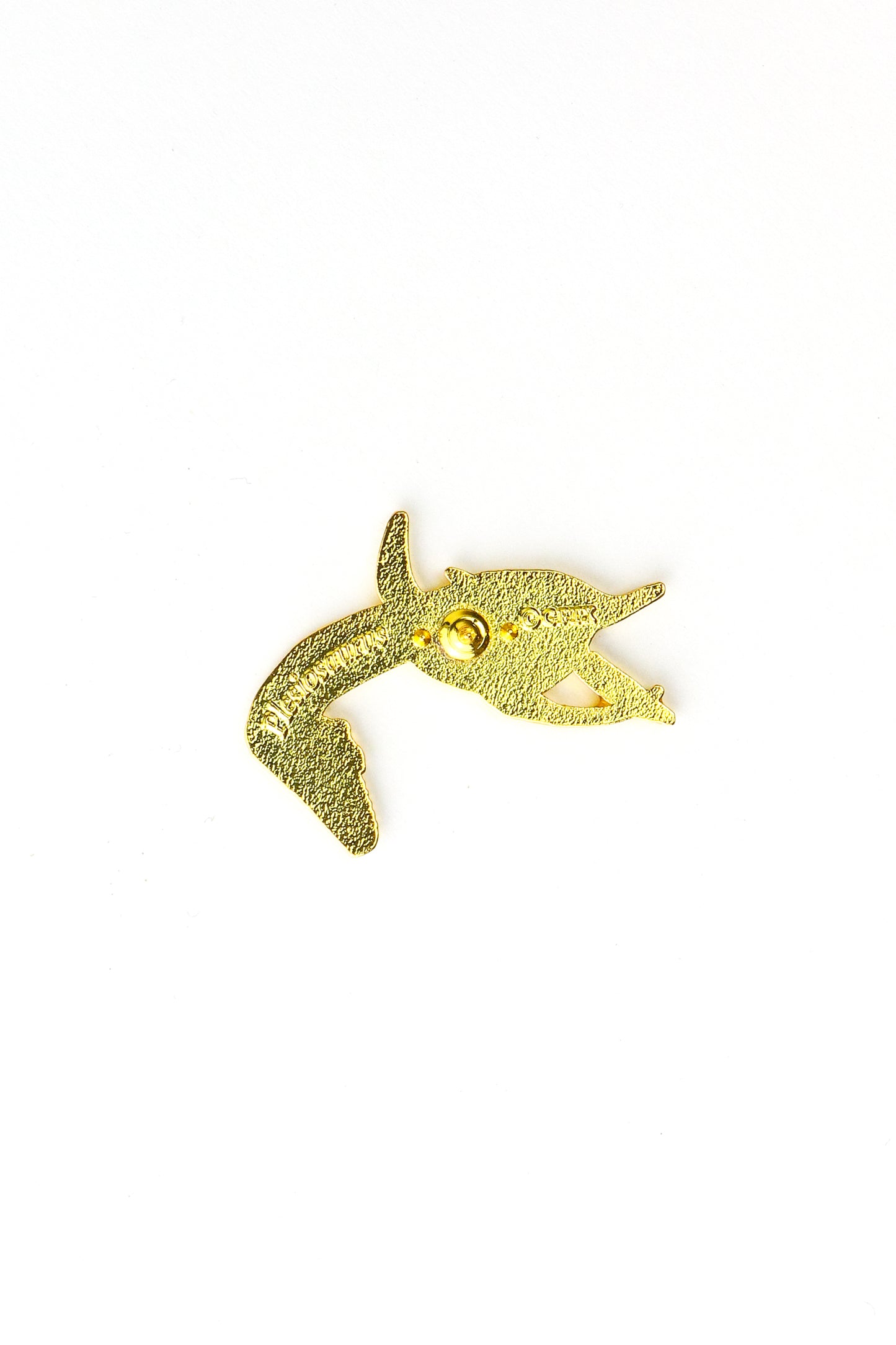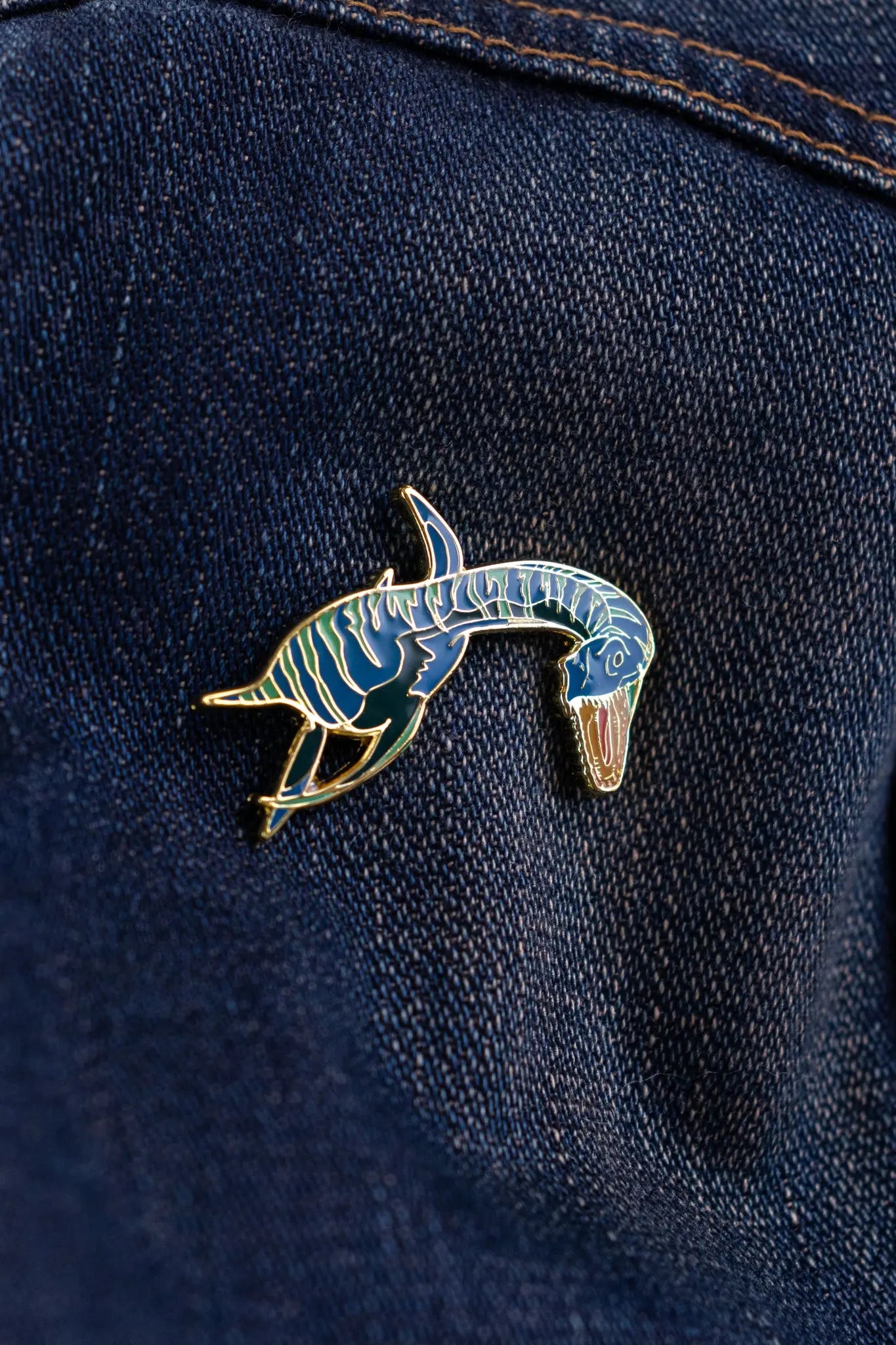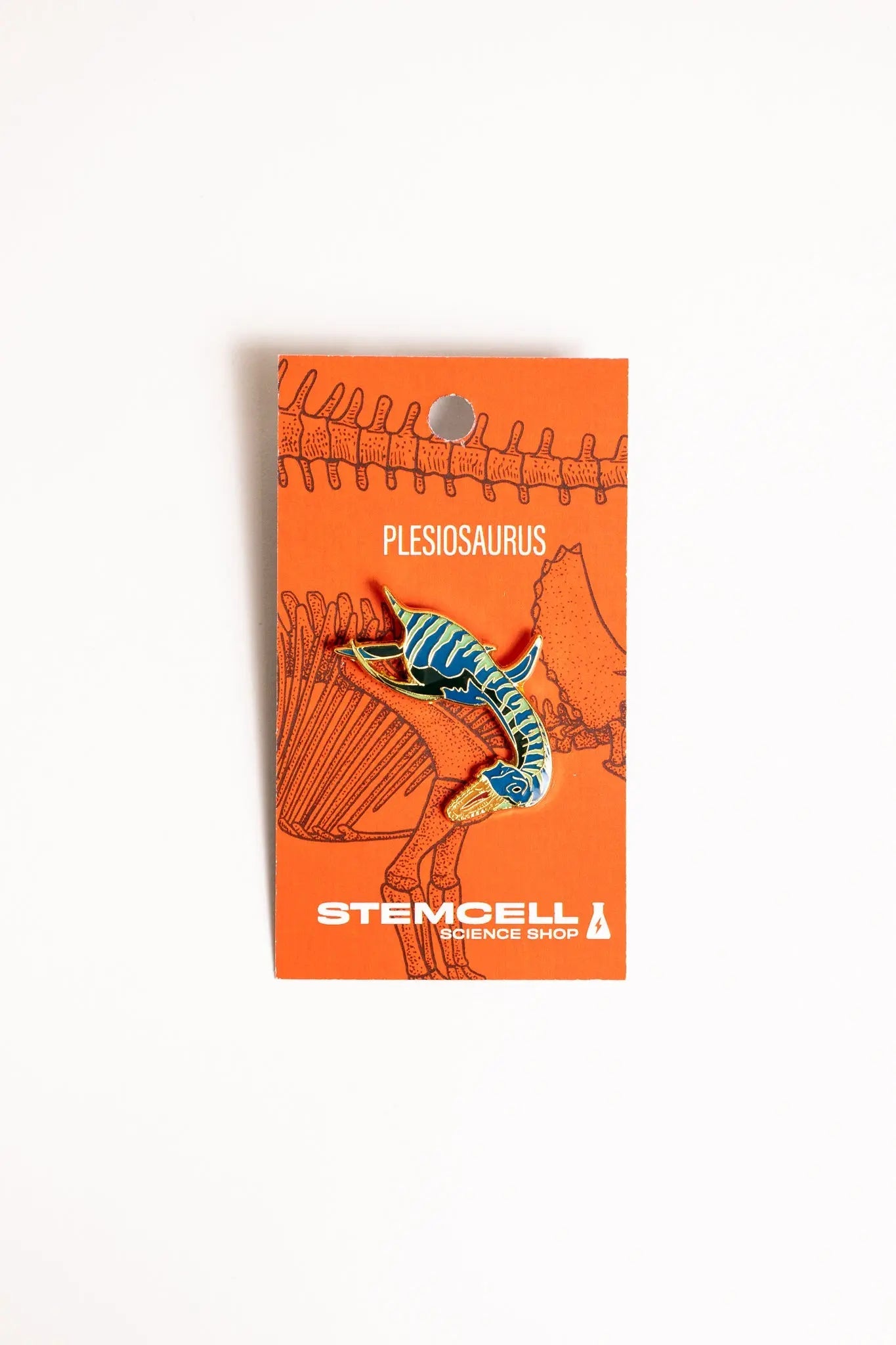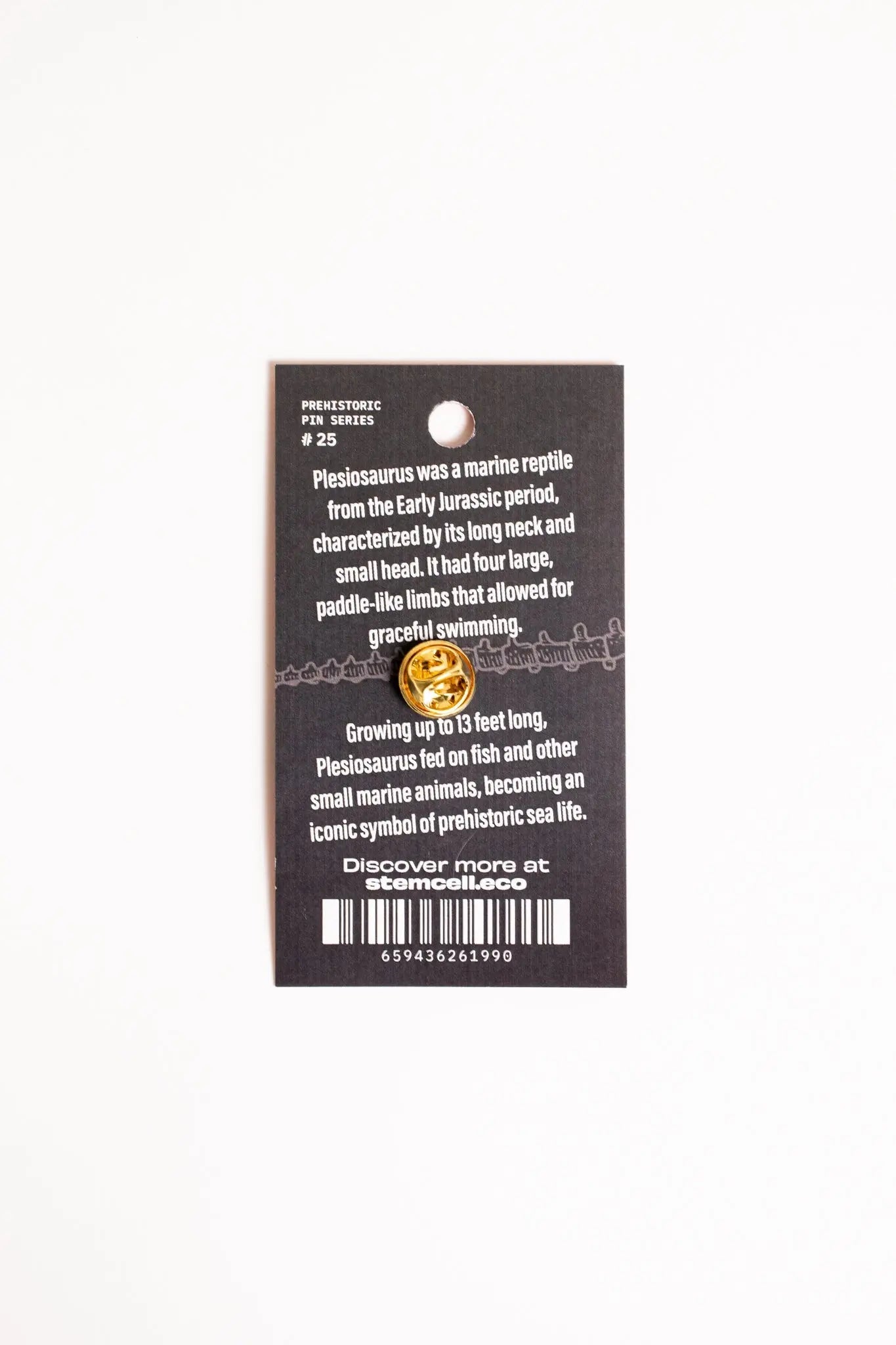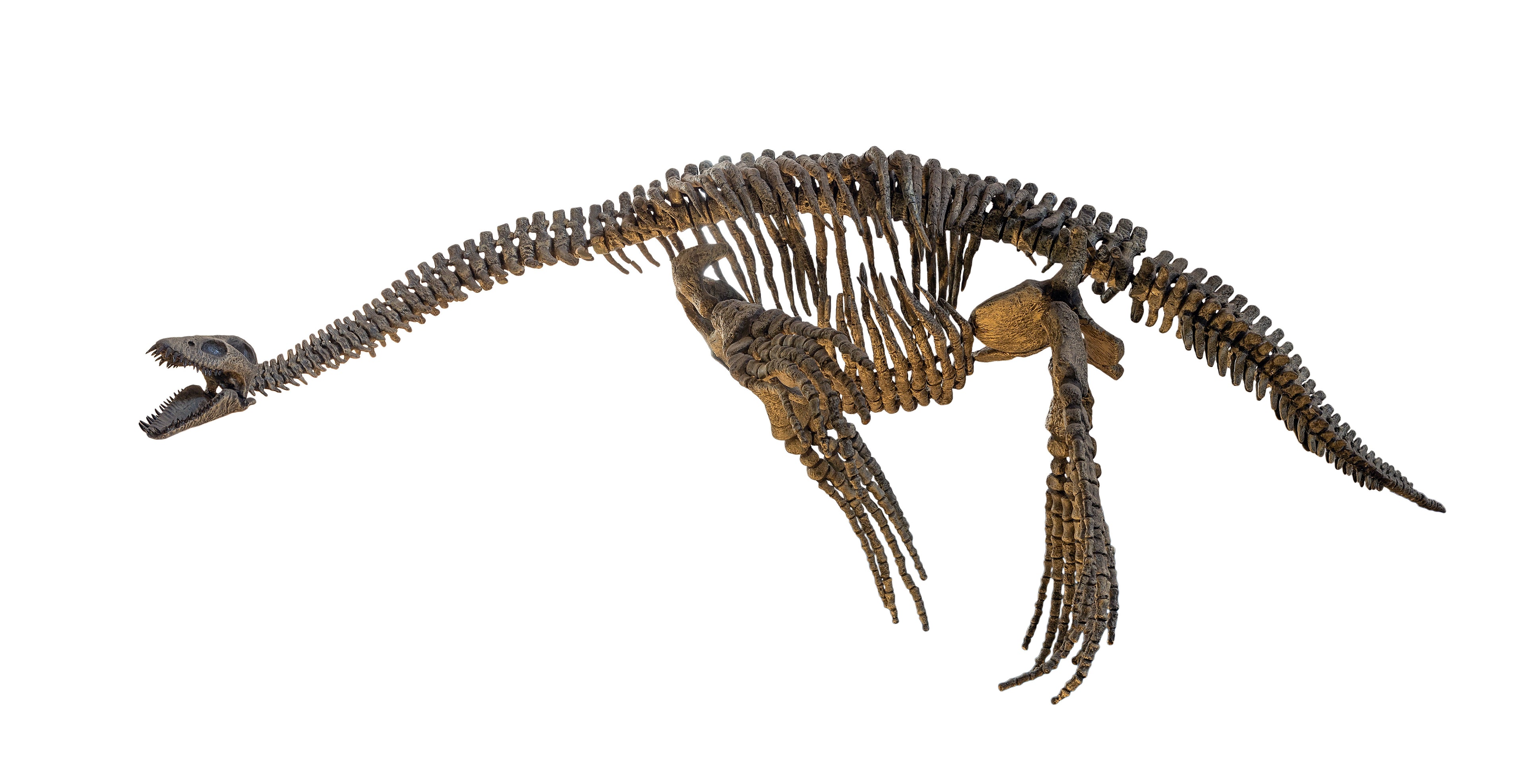
Plesiosaur Vertebrae
A collection of recently excavated Plesiosaur fossils from the Late Cretaceous
ABOUT THE PLESIOSAUR

Plesiosaurs were a group of large marine reptiles that lived during the Mesozoic era, specifically the Jurassic and Cretaceous periods. They were characterized by their unique body structure, which includes a small head, a long neck, a broad turtle-like body, and two pairs of large, paddle-like limbs used for swimming.
This family of creatures has been given many very similar names which can easily cause confusion. So it’s worth taking a moment to better understand the difference between these names.
Plesiosaurs are classified in the order Plesiosauria. The term "Plesiosaur" is often used as a catch-all term for these creatures. Within Plesiosauria, there are two primary families: the Plesiosauridae and the Pliosauridae.
- The Plesiosauridae, often referred to as "true plesiosaurs," is the family that contains the genus Plesiosaurus among others—this is where this collection is classified. The Plesiosaurus was the first of this group to be discovered and are well-known for their long necks and small heads. They were likely slower swimmers that used their lengthy necks to catch fish and other small marine animals. There is only one valid species within Plesiosaurus, P. dolichodeirus, which was discovered by Mary Anning.
- On the other hand, the Pliosauridae, commonly known as pliosaurs, had a different body shape. Pliosaurs generally had shorter necks and larger heads, and some species, like Liopleurodon, had skulls up to 2 meters long. Pliosaurs are believed to have been fast swimmers and top predators, capable of taking on larger prey.
Although these two families had different physical characteristics and hunting strategies, both were part of the larger group known as plesiosaurs and played a critical role in the marine ecosystems of their time. Despite their extinction at the end of the Cretaceous period, plesiosaurs remain iconic figures in our understanding of prehistoric marine life.
PHYSICAL FEATURES
As a carnivorous marine reptile, it likely fed on fish and other marine creatures. Plesiosaur teeth varied in shape and orientation depending on the species and their feeding habits. However, many plesiosaurs had teeth that were conical, sharp, and slightly curved, which helped them efficiently catch and hold onto their prey. In the teeth pointed slightly outward or laterally, which would have facilitated a better grip on slippery prey like fish and squid.
They had a unique respiratory system that included both lungs and a trachea. This allowed them to efficiently extract oxygen from the air while surfacing between dives. Plesiosaurs are believed to have given birth to live young instead of laying eggs. This adaptation allowed them to be fully adapted to life in the ocean and avoid the need to return to land for reproduction.
Plesiosaurs went extinct during the Cretaceous-Paleogene (K-Pg) mass extinction event around 66 million years ago, along with many other marine reptiles and non-avian dinosaurs.
ABOUT THE FOSSILS

VERTEBRAL ANATOMY
The main cylindrical body of an individual vertebra is called the centrum. Most plesiosaurs have two small openings for blood vessels and/or nerves on the bottom surface of each centrum. These are visible on many specimens of this collection.
On top of the centrum is the neural arch, which encloses the neural canal (labeled nc in the cervical vertebrae pictured), through which the spinal cord passed through in life. Many of the fossils in this collection still have at least a partial neural canal.
From the neural arch extends the prezygapopyses (az) to the front and the postzygopophyses (pz) to the rear. The pre- and postzygapophyses of adjacent vertebrae articulate with each other. A tall neural spine (ns) projects dorsally (upward) from the neural arch. Millions of years of geological processes are rough on these thin appendages, and they often don't last intact.
The shallow projections on the lower centrum are rib facets (rf) for the cervical ribs. Although these begin lower in the cervical spine, they migrate dorsally to the neural arch in vertebrae located in the mid spine, and return to the centrum for the caudal (tail) vertebrae.
Caudal vertebrae can be somewhat varied, but the front surfaces will feature more angular edges that make them appear somewhat hexagonal with chevrons.
The exact number of vertebral bones for an individual specimen varies by species. Plesiosaurs, in general, are known for their long necks, which typically consisted of numerous vertebrae. Some species had more than 40 cervical (neck) vertebrae.

SPECIES
The fossils in this collection were tentatively identified as Plesiosaurus mauritanicus, a species originally described by Arambourg in 1952. However, contemporary paleontologists suggest that this species has become a wastebasket taxon—a catch-all for fossils that don’t quite fit any other known species (Lomax and Wahl, 2013).
Wastebasket taxa have occurred several times in the fossil record of various creatures, particularly marine life such as cephalopods, where vast amounts of fossils have been discovered, covering thousands of unique species. The subtle physiological differences may take decades to sort through, and so a placeholder identifier can be useful. In this case, P. mauritanicus was vague enough to become the catch-all for Plesiosaurs.
The fossils that Arambourg used for the description of the species—a single tooth along with several vertebrae—had no autapomorphies (distinct features). Moreover, they were from two different individuals, found in different locations within a region now known to be lacking in Plesiosaurus fossils.
Our knowledge of this family has advanced considerably since 1952, and it will require some extensive research in the current literature to determine whether this collection belongs to another described species or perhaps represents a new species altogether. We are currently awaiting more reliable input from our network of experts. In all likelihood, these fossils belong to a species within the family Plesiosauridae.
LOCATION
This collection was discovered in phosphate beds of the Ouled Abdoun Basin in Morocco near the town of Khouribga. A map of the area is below, including a major phosphate mine, but we do not have a specific dig site.
These phosphate deposits are extensively mined and used to make much of the world’s fertilizer. The phosphates in the basin were formed over a long period of time, from at least 80 million years ago in the Late Cretaceous to 55 million years ago in the Paleogene. At the time, the sea levels were higher than today and the Atlantic ocean covered the region.
Collapsible content
References
- Ihbach F-Z, Kchikach A, Jaffal M, El Azzab D, Khadiri Yazami O, Jourani E-S, Peña Ruano JA, Olaiz OA, Dávila LV. Geophysical Prospecting for Groundwater Resources in Phosphate Deposits (Morocco). Minerals. 2020; 10(10):842. https://doi.org/10.3390/min10100842
- Cappetta, H., Bardet, N., Pereda Suberbiola, X., Adnet, S., Akkrim, D., Amalik, M., & Benabdallah, A. (2014). Marine vertebrate faunas from the Maastrichtian phosphates of Benguérir (Ganntour Basin, Morocco): Biostratigraphy, palaeobiogeography and palaeoecology. Palaeogeography, Palaeoclimatology, Palaeoecology, 409, 217–238. doi:10.1016/j.palaeo.2014.04.020
- Bardet, N. (2012). Maastrichtian marine reptiles of the Mediterranean Tethys: a palaeobiogeographical approach. Bulletin de La Societe Geologique de France, 183(6), 573–596. doi:10.2113/gssgfbull.183.6.573
- Vincent, P., Bardet, N., Pereda Suberbiola, X., Bouya, B., Amaghzaz, M., & Meslouh, S. (2011). Zarafasaura oceanis, a new elasmosaurid (Reptilia: Sauropterygia) from the Maastrichtian Phosphates of Morocco and the palaeobiogeography of latest Cretaceous plesiosaurs. Gondwana Research, 19(4), 1062–1073. doi:10.1016/j.gr.2010.10.005
- Bardet, N., Suberbiola, X. P., Jouve, S., Bourdon, E., Vincent, P., Houssaye, A., … Amaghzaz, M. (2010). Reptilian assemblages from the latest Cretaceous – Palaeogene phosphates of Morocco: from Arambourg to present time. Historical Biology, 22(1-3), 186–199. doi:10.1080/08912961003754945
- Arambourg, Camille (1885-1969). Auteur du texte. Les vertébrés fossiles des gisements de phosphates : Maroc, Algérie, Tunisie / par Camille Arambourg,... ; avec la collaboration de Jeanne Signeux. 1952
- Mulder, E.W.A., Bardet, N., Godefroit, P. & Jagt, J.W.M. 2000. Elasmosaur Remains from the Maastrichtian type area, and a Review of latest Cretaceous Elasmosaurs (Reptilia, Plesiosauroidea). Bulletin de l'Institut royal des Sciences naturelles de Belgique, Sciences de la Terre 70: 161-178.
- Lomax DR, Wahl WR. A new specimen of the elasmosaurid plesiosaur Zarafasaura Oceanis from the Upper Cretaceous ( Maastrichtian) of Morocco. Paludicola. 2013;9(2):97-109.
- Henri Cappetta, Nathalie Bardet, Xabier Pereda Suberbiola, Sylvain Adnet, Driss Akkrim, Mohamed Amalik, Aziza Benabdallah, Marine vertebrate faunas from the Maastrichtian phosphates of Benguérir (Ganntour Basin, Morocco): Biostratigraphy, palaeobiogeography and palaeoecology. Palaeogeography, Palaeoclimatology, Palaeoecology, Volume 409, 2014, Pages 217-238, ISSN 0031-0182, https://doi.org/10.1016/j.palaeo.2014.04.020.
- Andrews, Chas. W.. “Description of a New Plesiosaur from the Weald Clay of Berwick (Sussex).” Quarterly Journal of the Geological Society of London 78 (1922): 285 - NP.
- Hiller, N., Mannering, A.A., Jones, C.M., & Cruickshank, A.R. (2005). THE NATURE OF MAUISAURUS HAASTI HECTOR, 1874 (REPTILIA: PLESIOSAURIA).
- Andrews, C.W. (1910). IV.—Note on a Mounted Skeleton of a Small Pliosaur, Peloneustes Philarchus, Seeley, sp. Geological Magazine, 7, 110 - 112.
THE COLLECTION
No products found
Use fewer filters or remove all
ADD-ON SUGGESTION:
Plesiosaurus Enamel Pin (Plesiosaurus dolichodeirus)
